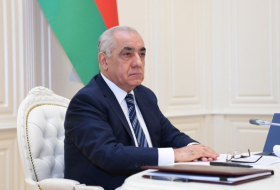Leaked figures show spike in palm oil use for biodiesel in Europe

Greenhouse gas emissions from biodiesel are more than three times higher than those from conventional diesel engines when indirect effects are considered, according to recent research by the European commission.
Campaigners say the leaked figures from the Fediol trade association provide further evidence that an EU target for sourcing 10% of Europe’s transport to renewables by 2020 is fuelling global warming.
Jos Dings, the director of green campaign group Transport & Environment (T&E), which published the leak, said: “We now know why the industry is withholding these numbers. They show the ugly truth of Europe’s biofuel policy. It drives tropical deforestation, increases transport emissions, does nothing to help European farmers and does not improve our energy security.”
T&E calculates that 3.5bn litres of palm oil are now arriving in Europe annually because of a 34% spike in imports for biodiesel since 2010. This would be enough to fill Wembley stadium with biodiesel three times over every day.
“As if Dieselgate [VW cheating at emissions tests] was not bad enough, we now have a Biodieselgate on top,” Dings said.
The vast majority of the world’s palm oil comes from Malaysia and Indonesia. Clearances for palm oil plantations there are thought to be responsible for many of the fires which incinerated an estimated 18.5m hectares of Indonesia’s rainforest between 2001 and 2014.
In 2015, the devastation reached record levels, releasing 1.62bn metric tonnes of CO2 and nudging Indonesia above Russia, as the world’s fourth largest emitter of greenhouse gases.
If the peatland forests were allowed to regrow, they would resequester much of the released carbon. But conversion of the land for palm oil plantations requires drainage and clearances that release massive amounts of carbon dioxide back into the atmosphere.
Fediol did not immediately respond to requests for comment but the European Biodiesel Board (EBB) said that the leaked numbers differed from their internal count.
Raffaello Garofalo, the board’s secretary-general told the Guardian: “The figures we have are substantially lower than that. We would put between 10-15% [of palm oil] globally for biodiesel consumption, based on agricultural sources.”
The EBB declined to share its figures for Europe based on palm oil sources, although Garofalo said that biodiesel manufactured that way “can be a little bit more problematic”.
An apparent anomaly in the statistics showing a rise in the palm oil composition of Europe’s biodiesel from the lesser figures of 6% to 31% over the same period illustrated that “T&E get their figures from the basket, not from science,” Garofalo said.
The use of domestic rapeseed in Europe’s biodiesel blends, general expansion of the biodiesel market, and larger relative volume of biodiesel explain the difference between the two figures, T&E says.
Tim Searchinger, a Princeton University scholar, argued that the leaked numbers were likely too conservative, as palm oil is widely used to displace vegetable oil for use in biodiesel production.
“The new data confirms the warnings of those who were critical of the EU’s biofuels mandate,” he told the Guardian. “Any pretence that the main consequence of the EU biofuels policy had not been the peat drainage and deforestation of south-east Asia is now unmasked.”
A European commission spokeswoman declined to comment on the leak. She said: “The commission will present proposals to revise the post-2020 bioenergy framework later this year.”
The EU currently has a cap of 7% for first generation biofuels in its 10% mandate. Most of this comes from biodiesel.















































